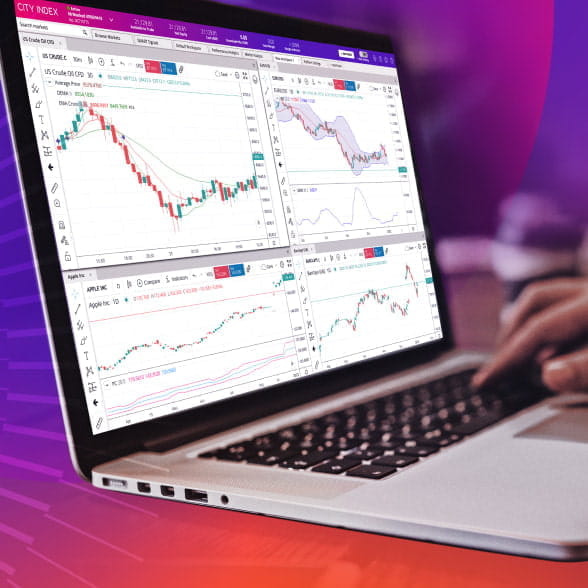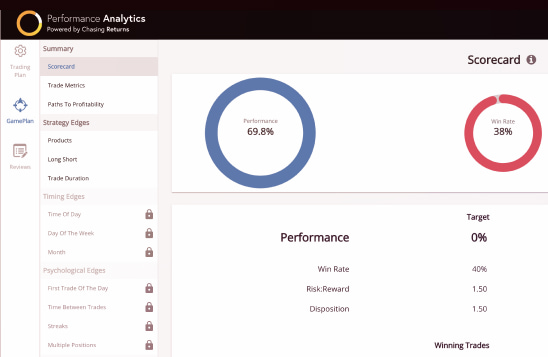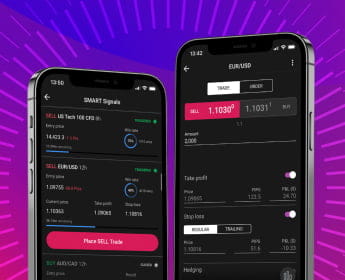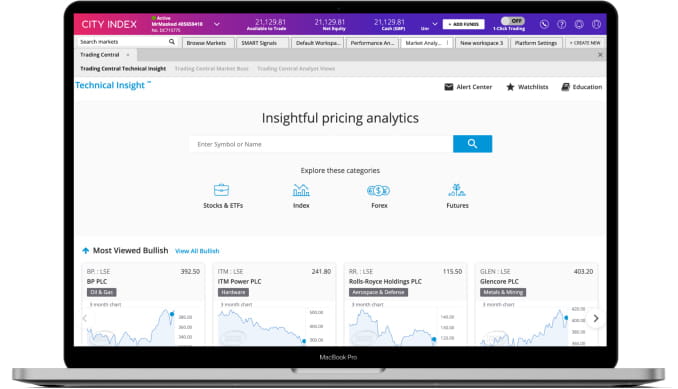
CFD trading
Discover CFD trading with City Index Singapore. Trade on over 6,000 global markets including indices, shares, FX and commodities, with tight spreads
Award-winning provider
Why trade CFDs with City Index?
-
Lowering the cost of trading
Competitive pricing across every asset class, plus free live market data and no hidden fees.
-
Advanced trading platforms
Trade on your browser or smartphone, and access exclusive tools including Performance Analytics and SMART Signals.
-
Extended market hours
Find and execute more opportunities with out-of-hours trading on share CFDs.
-
Award-winning
Winner of Best CFD Provider - ADVFN International Financial Awards 2022 and Best Trading Platform 2022 – Online Money Awards.
- 1. Choose a CFD market
- 2. Decide to buy or sell
- 3. Select your trade size
- 4. Add a stop loss
- 5. Monitor and close your trade
See our CFD trading costs
When you buy and sell share CFDs, you’ll pay commission. With every other CFD market we offer, though, there’s no commission to pay – all the costs to open and close your position are covered in the spread. You’ll pay an overnight funding charge if you keep a daily CFD open overnight.
Trade wherever you are, on our fast, reliable platforms
Customisable charts
16 chart types with 80+ indicators designed to help you perform technical analysis
Award-winning platform
Our powerful technology is designed to suit you, whatever your level of trading expertise
Actionable trade ideas
Our research portal highlights trade ideas using fundamental and technical analysis
Trade anytime, anywhere
Follow the markets on native apps built specifically for your smartphone
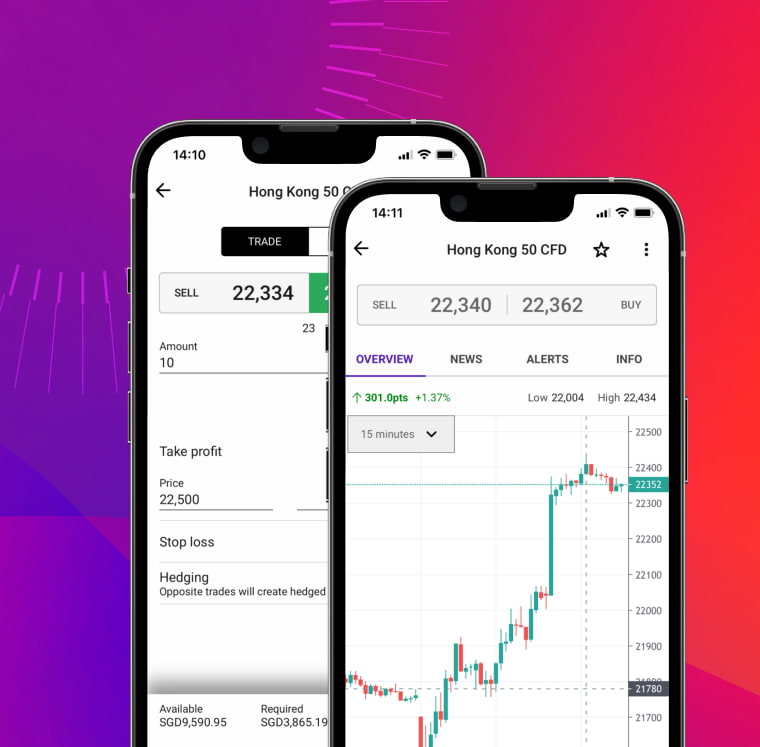
Powerful trading tools
Open an account with the best CFD provider*
Open an account with the best CFD provider*
CFD FAQs
How does CFD margin work
CFD margin works by only requiring you to hold a fraction of a trade’s total value in your account in order to open and maintain your position. However, your final profit and loss will still be based on the full size of your trade.
Trading $1000 of Amazon stock with CFDs, for example, might only require you to have $100 in your account as margin. But if that stock then increases to a value of $1100, you’ll make the full $100 as profit – the same as if you’d paid the full $1000. If the stock falls to $900, you still lose $100.
Essentially, in this example you’d have made $100 profit from an initial outlay of just $100, a gain of 100%. Without CFDs, you’d still have made $100, but you’d have paid $1000. Your gain would only be 10%, meaning the CFD margin has magnified your profits.
However, exactly the same effect applies to losses – which is why risk management is a key part of CFD trading.
How do you calculate CFD profits?
To calculate CFD profits, you multiply the number of CFDs you have traded by the point value of each CFD – and multiply that figure by the number of points the underlying market has moved from when you opened your trade to when you close it.
If the underlying market has moved in your chosen direction, you earn that figure as profit. If not, you make a loss.
That might sound complicated, but it becomes much simpler in an example.
Buying a single Australia 200 CFD will earn you $1 for every point the index rises and lose you $1 for every point it falls, which means an Australia 200 CFD has a point value of $1. Buy 10 Australia 200 CFDs, and you’ll make $10 for every point the index rises – but lose $10 for each point it falls.
If the Australia 200 moves from 7100 to 7200, then it has moved 100 points. You’ve bought CFDs, so you profit if the index moves up, meaning your 10 CFDs make you a profit of (100 points * $10 point value) $1000.
If you’d sold 10 CFDs instead, you’d make the same figure ($1000) as a loss.
Of course, you’ll need to minus any overnight financing fees to get the net outcome from your trade.
How do CFDs work?
CFDs work using contracts that track the live prices of financial markets. When you trade one of these contracts, you’ll exchange the difference in the market’s price from when you open your position to when you close it. You can buy CFDs to open a long position or sell them to go short.
For example, say you buy an Australia 200 CFD when the index is at 7100, then sell it at 7200. You’ll exchange the difference between 7100 and 7200, pocketing 100 points as profit. If the Australia 200 fell to 7000 instead, though, you’d lose 100 points.
Your total profit or loss is dictated by the number of contracts you buy or sell.











